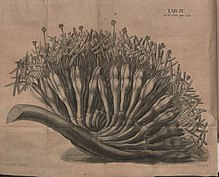PLANT CARE ( Aloe Vera | First Aid Plant ) BUY NOW
 |
In summer it is best at 68°F, In winter 50°F – 59°F. |
 |
Bright sun can grow in the shade, but weakly. |
 |
Low humidity. |
 |
Water your aloe plant about every 2-3 weeks in the spring and summer. |
ADDITIONAL CARE
Water Aloe Vera | First Aid Plant nicely. The soil of the Aloe Vera | First Aid Plant has to be allowed to dry before being watered. Whilst the plant is watered, the soil should be thoroughly drenched, however, the water has to be allowed to empty freely from the soil. The most common purpose a Vera | First Aid Plant dies is that the owner‘s water too often, or does now not allow the water to drain. you could fertilize your Aloe Vera | First Aid Plant however, aloes normally don’t want to be fertilized.
Aloe vera (/ˈæloʊiː/ or /ˈæloʊ/) is a succulent plant species of the genus Aloe. Having some 500 species, Aloe is widely distributed and is considered an invasive species in many world regions.
An evergreen perennial, it originates from the Arabian Peninsula but grows wild in tropical, semi-tropical, and arid climates around the world.[3] It is cultivated for commercial products, mainly as a topical treatment used over centuries. The species is attractive for decorative purposes and succeeds indoors as a potted plant
It is used in many consumer products, including beverages, skin lotion, cosmetics, ointments or in the form of gel for minor burns and sunburns. There is little clinical evidence for the effectiveness or safety of Aloe vera extract as a cosmetic or topical drug. The name derives from Latin as aloe and vera (“truth”).
Etymology and common names
The botanical name derives from Latin, aloe (also from Greek), having an uncertain origin, and vera (“truth”) from Latin.[7] Common names use aloe with a region of its distribution, such as Chinese aloe, Cape aloe or Barbados aloe.
Description
Aloe vera is a stemless or very short-stemmed plant growing to 60–100 centimetres (24–39 inches) tall, spreading by offsets.[3] The leaves are thick and fleshy, green to grey-green, with some varieties showing white flecks on their upper and lower stem surfaces.[10] The margin of the leaf is serrated and has small white teeth. The flowers are produced in summer on a spike up to 90 cm (35 in) tall, each flower being pendulous, with a yellow tubular corolla 2–3 cm (3⁄4–1+1⁄4 in) long.[10][11] Like other Aloe species, Aloe vera forms arbuscular mycorrhiza, a symbiosis that allows the plant better access to mineral nutrients in the soil.
Aloe vera leaves contain phytochemicals under study for possible bioactivities, such as acetylated mannans, polymannans, anthraquinone C-glycosides, anthrones, and other anthraquinones, such as emodin and various lectins.[13][14]
Taxonomy
Historical image from Acta Eruditorum, 1688
The species has several synonyms: A. barbadensis Mill., Aloe Indica Royle, Aloe perfoliata L. var. vera and A. Vulgaris Lam.[15][16] Some literature identifies the white-spotted form of Aloe vera as Aloe vera var. Chinensis; and the spotted form of Aloe vera may be conspecific with A. massawana. The species was first described by Carl Linnaeus in 1753 as Aloe perfoliata var. vera and was described again in 1768 by Nicolaas Laurens Burman as Aloe vera in Flora Indica on 6 April and by Philip Miller as Aloe barbadensis some ten days after Burman in the Gardener’s Dictionary.
Techniques based on DNA comparison suggest Aloe vera is relatively closely related to Aloe perryi, a species endemic to Yemen. Similar techniques, using chloroplast DNA sequence comparison and ISSR profiling have also suggested it is closely related to Aloe forbesii, Aloe inermis, Aloe scobinifolia, Aloe sinkatana, and Aloe striata. With the exception of the South African species A. striata, these Aloe species are native to Socotra (Yemen), Somalia, and Sudan. The lack of obvious natural populations of the species has led some authors to suggest Aloe vera may be of hybrid origin.
Distribution
A. vera is considered to be native only to the southeast Arabian Peninsula in the Al-Hajar mountains in north-eastern Oman.[26] However, it has been widely cultivated around the world and has become naturalized in North Africa, as well as Sudan and neighbouring countries, along with the Canary Islands, Cape Verde, and Madeira Islands. It has also been naturalized in the Algarve region of Portugal, and in wild areas across southern Spain, especially in the region of Murcia.
The species was introduced to China and various parts of southern Europe in the 17th century. It is widely naturalized elsewhere, occurring in arid, temperate, and tropical regions of temperate continents. The current distribution may be the result of cultivation.
Cultivation
As an ornamental plant
Aloe vera has been widely grown as an ornamental plant. The species is popular with modern gardeners as a topical medicinal plant[33] and for its interesting flowers, form, and succulence. This succulence enables the species to survive in areas of low natural rainfall, making it ideal for rockeries and other low water-use gardens.[10] The species is hardy in zones 8–11 and is intolerant of heavy frost and snow. The species is relatively resistant to most insect pests, though spider mites, mealy bugs, scale insects, and aphid species may cause a decline in plant health. This plant has gained the Royal Horticultural Society‘s Award of Garden Merit.
In pots, the species requires well-drained, sandy potting soil and bright, sunny conditions. Aloe plants can turn red from sunburn under too much direct sun, though gradual acclimation may help.[38] The use of a good-quality commercial propagation mix or packaged “cacti and succulent mix” is recommended, as they allow good drainage.[39] Terra cotta pots are preferable as they are porous.[39] Potted plants should be allowed to completely dry before rewatering. When potted, aloes can become crowded with “pups” growing from the sides of the “mother plant”. Plants that have become crowded can be divided and repotted to allow room for further growth, or the pups can be left with the mother plant.[38] During winter, Aloe vera may become dormant, during which little moisture is required. In areas that receive frost or snow, the species is best kept indoors or in heated glasshouses. Houseplants requiring similar care include haworthia and agave.
There is large-scale agricultural production of Aloe vera in Australia, Cuba, the Dominican Republic, China, Mexico, India, Jamaica, Spain, where it grows even well inland, Kenya, Tanzania, and South Africa, along with the USA to supply the cosmetics industry.
Uses
Two substances from Aloe vera – a clear gel and its yellow latex – are used to manufacture commercial products. Aloe gel typically is used to make topical medications for skin conditions, such as burns, wounds, frostbite, rashes, psoriasis, cold sores, or dry skin. Aloe latex is used individually or manufactured as a product with other ingredients to be ingested for the relief of constipation. Aloe latex may be obtained in a dried form called resin or as “aloe dried juice”.[47]
Research
There is conflicting evidence regarding whether Aloe vera is effective as a treatment for wounds or burns. There is some evidence that topical use of aloe products might relieve symptoms of certain skin disorders, such as psoriasis, acne, or rashes.
Aloe vera gel is used commercially as an ingredient in yoghurts, beverages, and some desserts, but at high or prolonged doses, ingesting aloe latex or whole leaf extract can be toxic. The use of topical aloe vera in small amounts is likely to be safe.
Topical medication and potential side effects
Aloe vera may be prepared as a lotion, gel, soap or cosmetics product for use on skin as a topical medication. For people with allergies to Aloe vera, skin reactions may include contact dermatitis with mild redness and itching, difficulty with breathing, or swelling of the face, lips, tongue, or throat.
Dietary supplement
Aloin, a compound found in the semi-liquid latex of some Aloe species, was the common ingredient in over-the-counter (OTC) laxative products in the United States until 2002 when the Food and Drug Administration banned it because manufacturers failed to provide the necessary safety data. Aloe vera has potential toxicity, with side effects occurring at some dose levels both when ingested and when applied topically. Although toxicity may be less when aloin is removed by processing, Aloe vera ingested in high amounts may induce side effects, such as abdominal pain, diarrhea or hepatitis. Chronic ingestion of aloe (dose of 1 gram per day) may cause adverse effects, including hematuria, weight loss, and cardiac or kidney disorders
Aloe vera juice is marketed to support the health of the digestive system, but there is neither scientific evidence nor regulatory approval for this claim. The extracts and quantities typically used for such purposes are associated with toxicity in a dose-dependent way.
Traditional medicine
Aloe vera is used in traditional medicine as a skin treatment. Early records of its use appear from the fourth millennium BCE.[4] It is also written in the Juliana Anicia Codex of 512 CE.
Commodities
Aloe vera is used on facial tissues where it is promoted as a moisturizer and anti-irritant to reduce chafing of the nose. Cosmetic companies commonly add sap or other derivatives from Aloe vera to products such as makeup, tissues, moisturizers, soaps, sunscreens, incense, shaving cream, or shampoos.[48] A review of academic literature notes that its inclusion in many hygiene products is due to its “moisturizing emollient effect”.[14]
Interactions with prescribed drugs
Ingested aloe products may have adverse interactions with prescription drugs, such as those used to treat blood clots, diabetes, heart disease and potassium-lowering agents (such as Digoxin), and diuretics, among others.[33]





